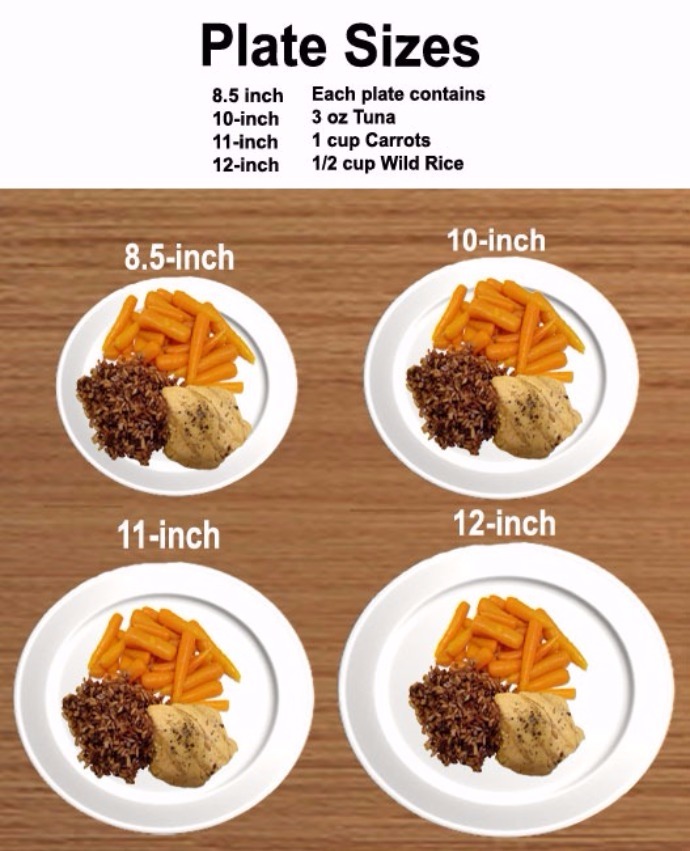

Indeed, this illusion is so persuasive that many people are surprised to find the volume of large sizes is often little different from the next size down. It also holds for pouring drinks – even after training, and even among experienced bar-tenders.

This effect is displayed by adults and is even stronger among children. People drink less from a tall, thin glass than a short, wide glass with the same volume. If you want to reduce your intake of sweetened drinks or alcohol, for instance, use tall, thin glasses in place of short, wide glasses. You can also use these illusions with beverages. So, if you are using large plates, choose plates of a colour different from the food and similar to the tablecloth. Over-serving on bigger plates is also more likely if there’s high contrast between the plate colour and the tablecloth colour. The tendency to over-serve on big plates is amplified when there’s not much of a contrast in the colour of the food and the plate, such as pasta with a creamy sauce served on a white plate. But the size contrast is complicated by the issue of colour contrast. The Delboeuf and Ebbinghaus illusions are thought to critically depend on the contrast in size between the target (the circle in the centre) and the surrounding context.Ī portion of food appears smaller when served on a bigger plate, encouraging us to over-serve. The Delboeuf illusion is one of the reasons for the effect of plate size on portion size. The illusory effect of plate size on portion size is explained by the Delboeuf illusion, and the related Ebbinghaus illusion. This may underlie the common criticisms of nouvelle cuisine as providing “tiny portions” that are more art form than food. The use of bigger plates leads to the reverse effect – the portion looks smaller than it is.


 0 kommentar(er)
0 kommentar(er)
